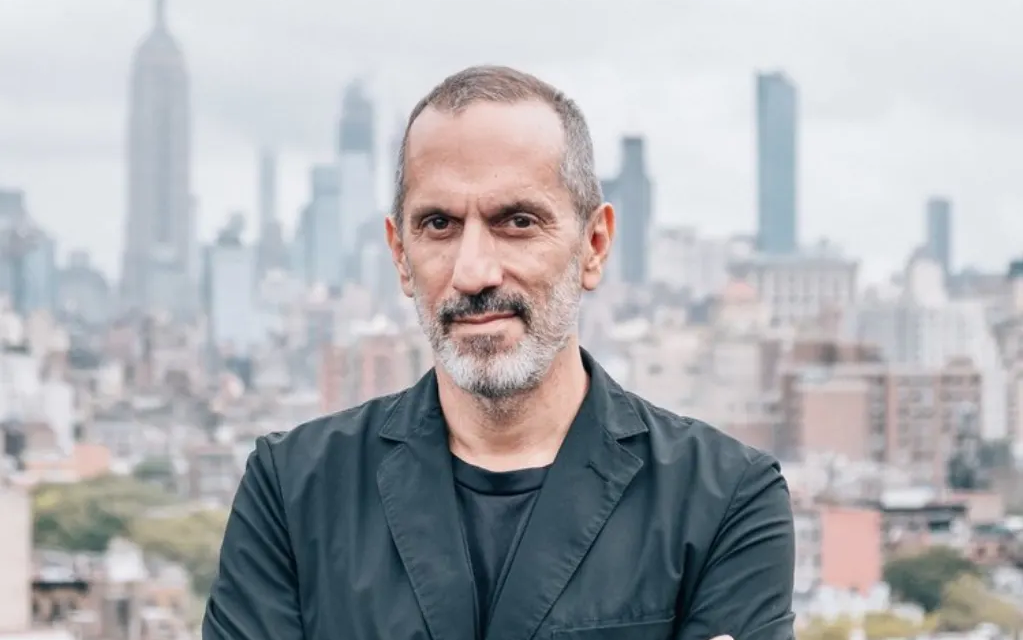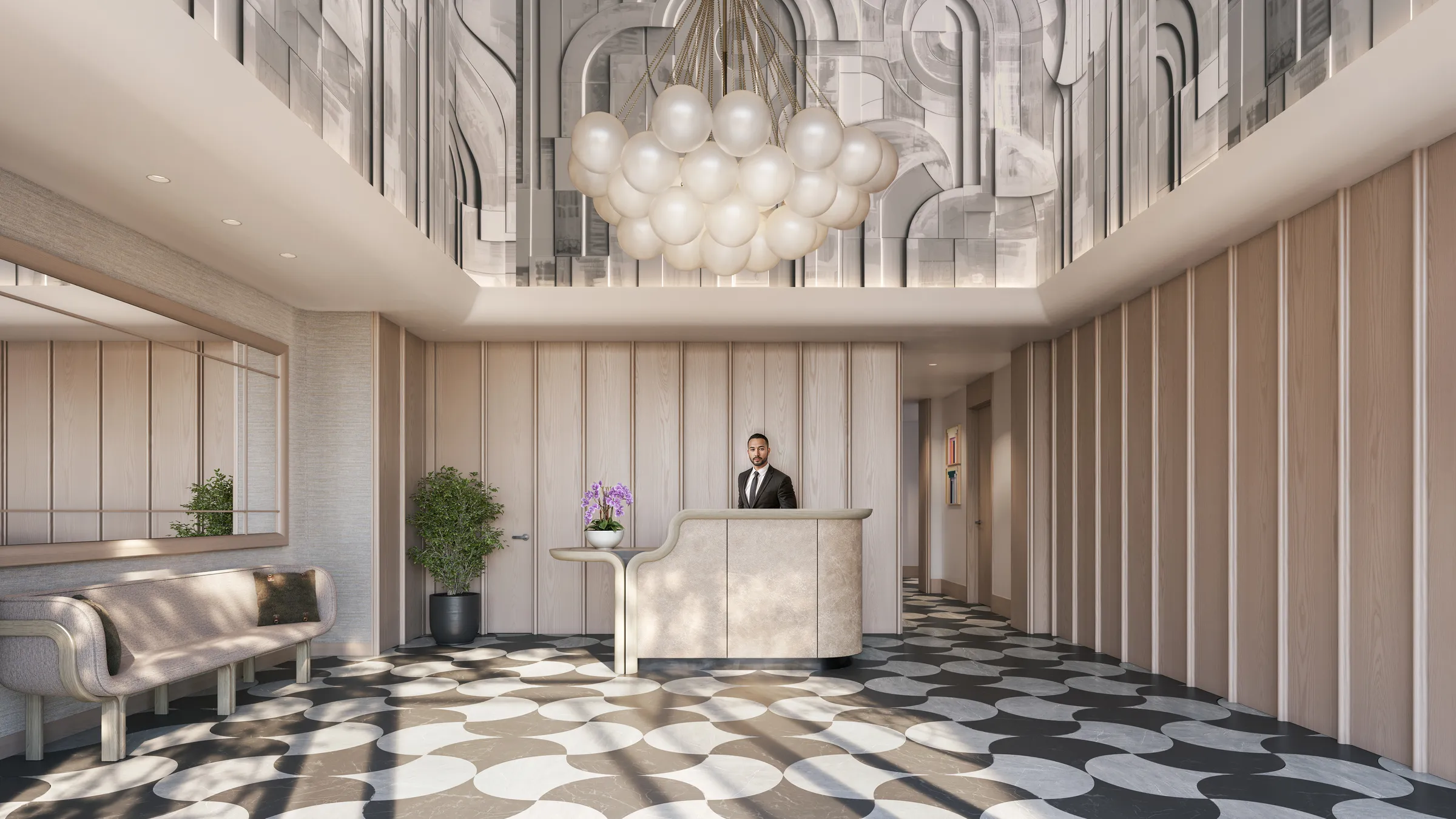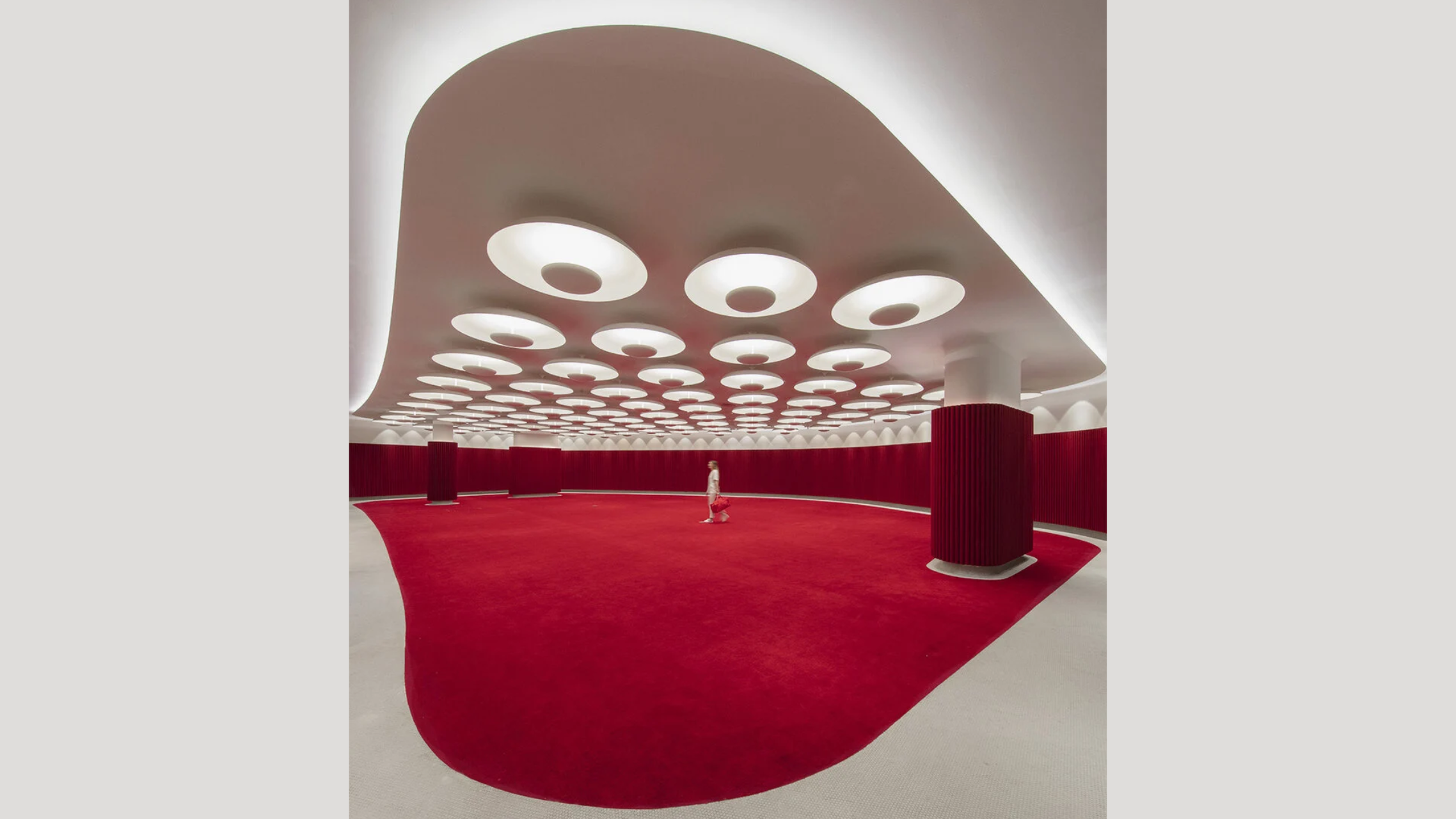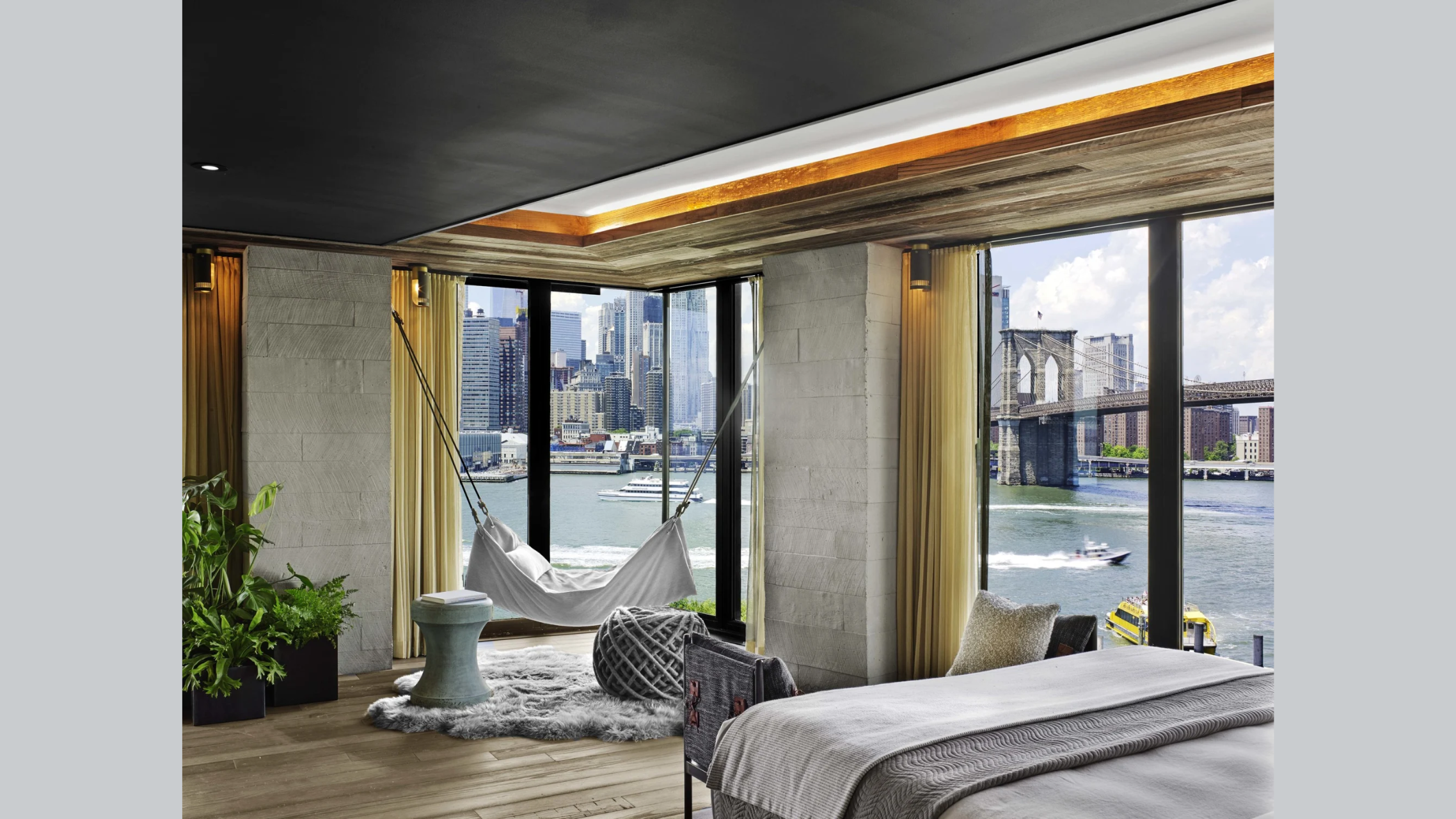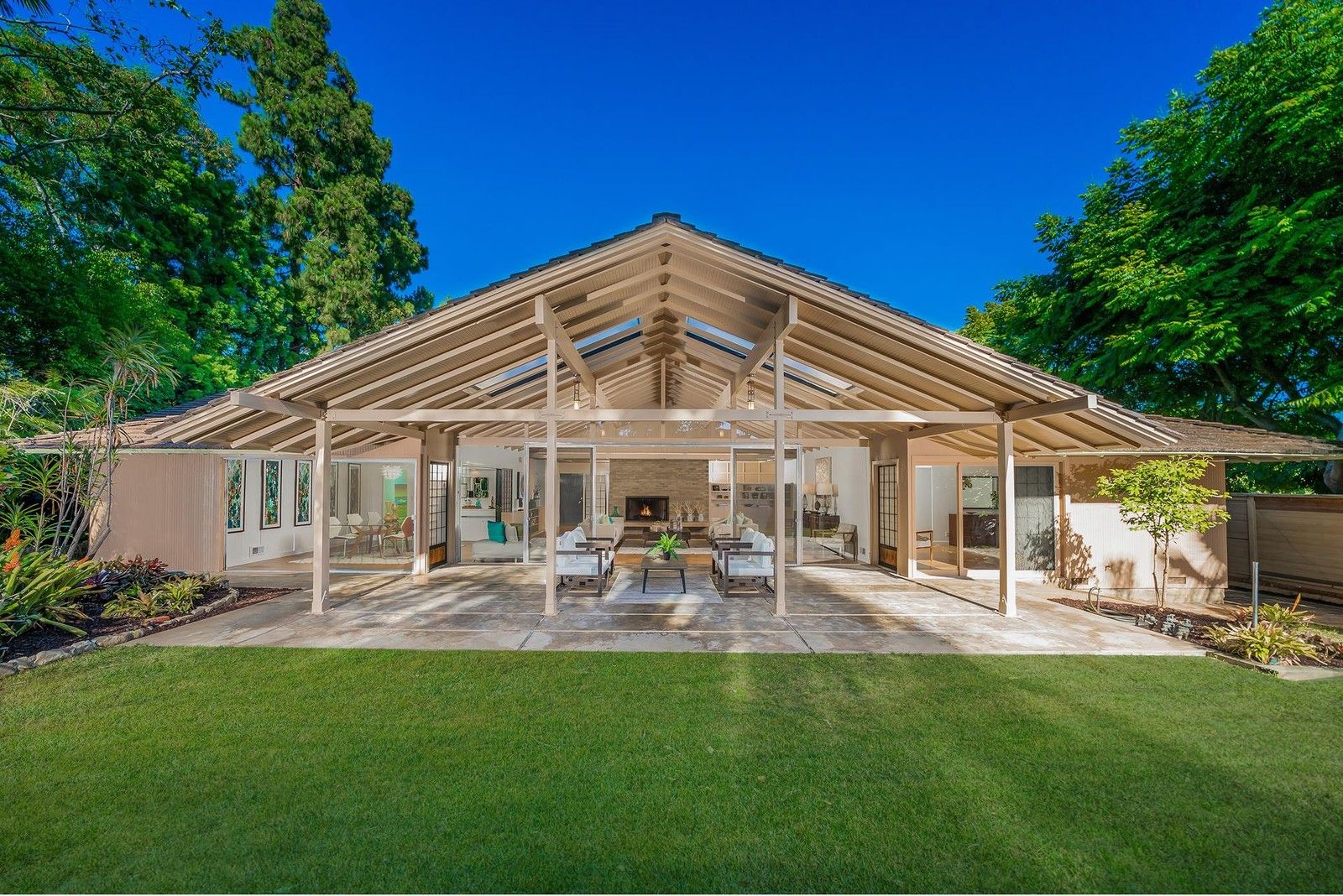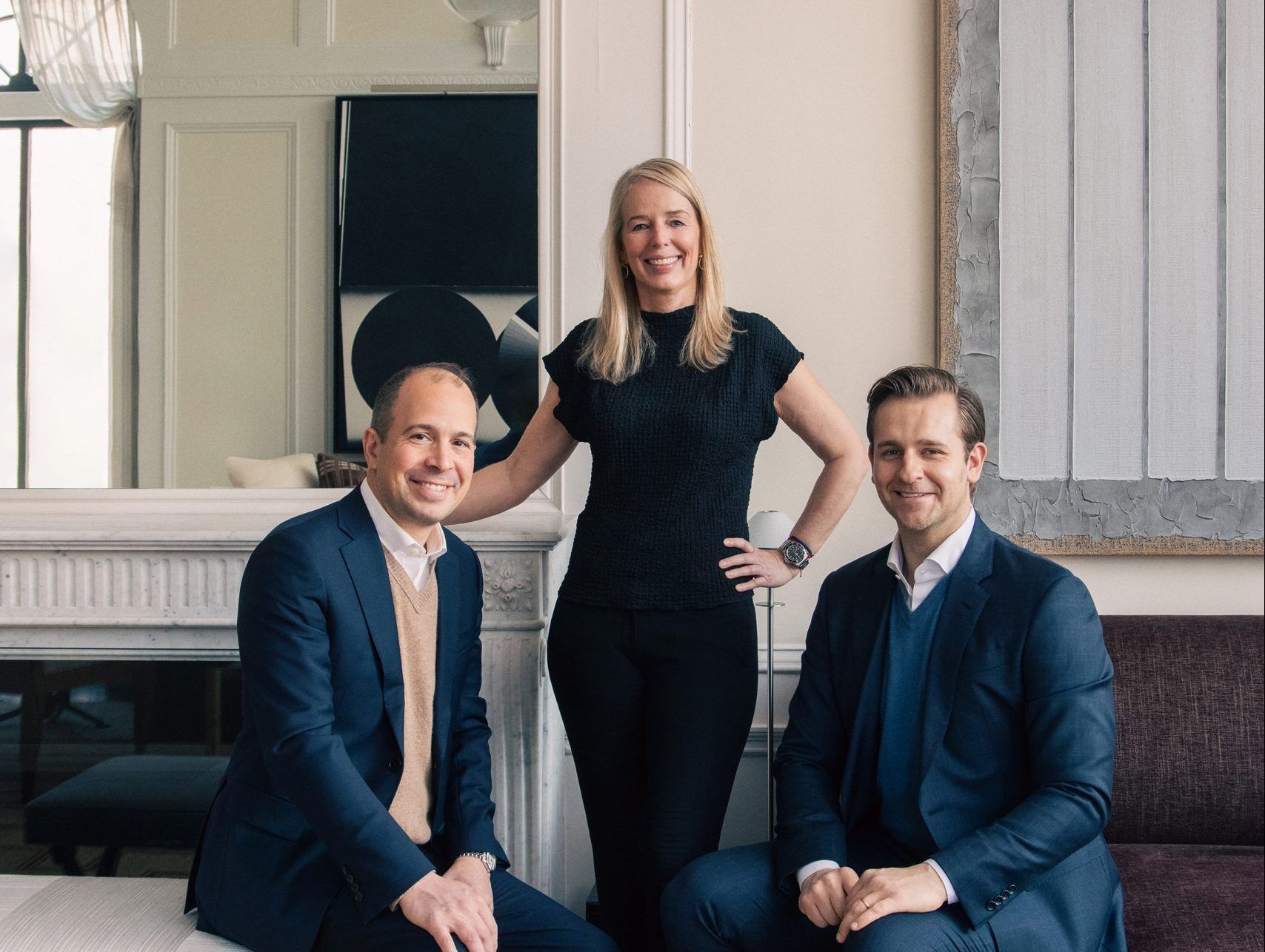DE x PRIDE: How Designer Adam Rolston Helped Bring Gay Visibility to the Architecture World
by David Hay
June 2025
How does one’s sexuality shape the work they do? Does identifying as gay tend to lead one down particular career paths? Is there such a thing as “gay design”? These were some of the questions on my mind when I reached out recently to the renowned designer, artist, and longtime gay activist Adam Rolston.
As senior founding partner and creative and managing director of the Manhattan-based INC Architecture & Design, Rolston has made a distinct mark on the design landscape of New York City and beyond. Among INC’s most notable projects are the design and architecture for 1 Hotel Brooklyn Bridge, the event and gallery spaces for the TWA Hotel at Kennedy Airport, and the interiors for the Hudson Yards condo tower VITA, a partnership with Douglas Elliman Development Marketing.
With Pride Month celebrations defiantly doubling down on LGBTQ+ acceptance and visibility in the face of renewed hostility to all things DEI, I wanted to know how—or even if—Rolston thought about the particular and standout contributions that members of the LGBTQ+ community have had on the world of architecture and design.
As it turned out, he thinks about it quite a lot—and smartly, at that.
“It’s my wheelhouse,” he said.
Rolston very intentionally draws on his four decades of experience as a gay man whose formative artistic experiences and design sensibilities grew out of his affiliation with the pioneering activist collective ACT UP. Having that historic hindsight, he can appreciate the greater visibility and recognition that the LGBTQ+ community has earned in the industry.
Design for activism
A Los Angeles native, Rolston arrived in NYC in the mid-1980s after graduating from the architecture program at Syracuse University. He recalls it as a typically rigorous program that pursued many of the rational currents we still associate with that profession—early- and mid-century Modernism followed on by the “rebellion” that Post-Modernism imagined it might become.
It was also a very “straight” education befitting—and promoting—the heterosexual male design practitioner and his tribe. One area it deliberately put to the side was interior design, considering it a practice, not a profession—and one best left to its many female and gay adherents. Highly talented practitioners, to be sure, but rarely afforded the grand stature of Architect.
Very much analogous to similar historical biases in the real estate world, where property sales were regarded as the lesser art—and thus the province of women and gay men—while straight men financed, developed, and built the properties, this bifurcation rankled Rolston. It was joining ACT UP that gave him a way to push back.
Established in 1987, at the height of the HIV epidemic, the AIDS Coalition to Unleash Power was not only a scrappy and resourceful outfit where collaboration was essential, but it was also a hotbed for artists and designers who banded together to create provocative, often confrontational work.
Joining with a group of other artists and activists under the collective moniker GANG, Rolston began creating and exhibiting work, including his iconic Barbara Kruger-esque crack-and-peel stickers proclaiming “I am out therefore I am,” which recently was presented at the legendary Grey Art Gallery.
Letting interior design out of the closet
Though he continued to navigate those artificial divisions in the profession, he went on to work for three gay architects before partnering with Drew Stuart and Gabriel Benroth to establish INC, an acronym for Iucunditas Necessarius Creo—Latin for the three essential elements of their design practice: joy, utility, and craft. That credo is very much intended to eliminate the boundaries and barriers that historically have divided and marginalized. Promoting itself as a “studio dedicated to the integration of these disciplines,” the firm has designed for a remarkable range of projects, from multi-story towers to restaurants to avant-garde homes. At INC, everything is on the table, every design is valid.
“With INC we combined architecture and interior design into a single mission,” he recalled. “We weren’t going to relegate interiors to a practice that simply made things ‘pretty’; we were going to have a firm that viewed it on a par with architecture.”
Rolston happily sees changes all about him, including the professionalization of interior design, now worthy of a degree on its own and an elevated status that allows many designers to charge fees commensurate with architects.
“I think the stereotype of the ‘gay decorator’ remains with us,” he cautioned. “And there are still all too few major architects or developers who are out and out gay.”
Such subtle prejudice is not only evident in hiring, but it also permeates their practice as well. There’s acceptable room for the gay decorator to be flamboyant in the home, but that tolerance has not extended to the public arena. While Zaha Hadid could afford to be very expressive in her design sensibility, Rolston noted, “I don’t see gay architects stepping up and taking such chances with larger and more public-facing commissions.”
He was encouraged, however, by a recent opportunity to critique an architecture class at NYC’s Fashion Institute of Technology. “So much of it was very sexy, highlighting bright colors, ‘60s-inspired forms, and bursting free from more rational, historical design traditions,” he said.
In INC’s practice, Rolston still finds himself struggling with integrating the gay and the straight, the rational architect and highly expressive interior decorator.
“Sometimes when I go into a meeting I’ll be treated like an architect first,” he shared, “but then the language shifts and ‘the interiors guy’ emerges—and it pivots into something more fun, albeit in the same meeting.”
Perhaps Rolston and others would not have achieved their ground-breaking success had they not heeded the message on that landmark 3” x 3” sticker: “I am out therefore I am.” It’s hard to change perceptions and practice in any realm, let alone architecture, design, or real estate. But visibility is vital. Worth remembering this time of year.
